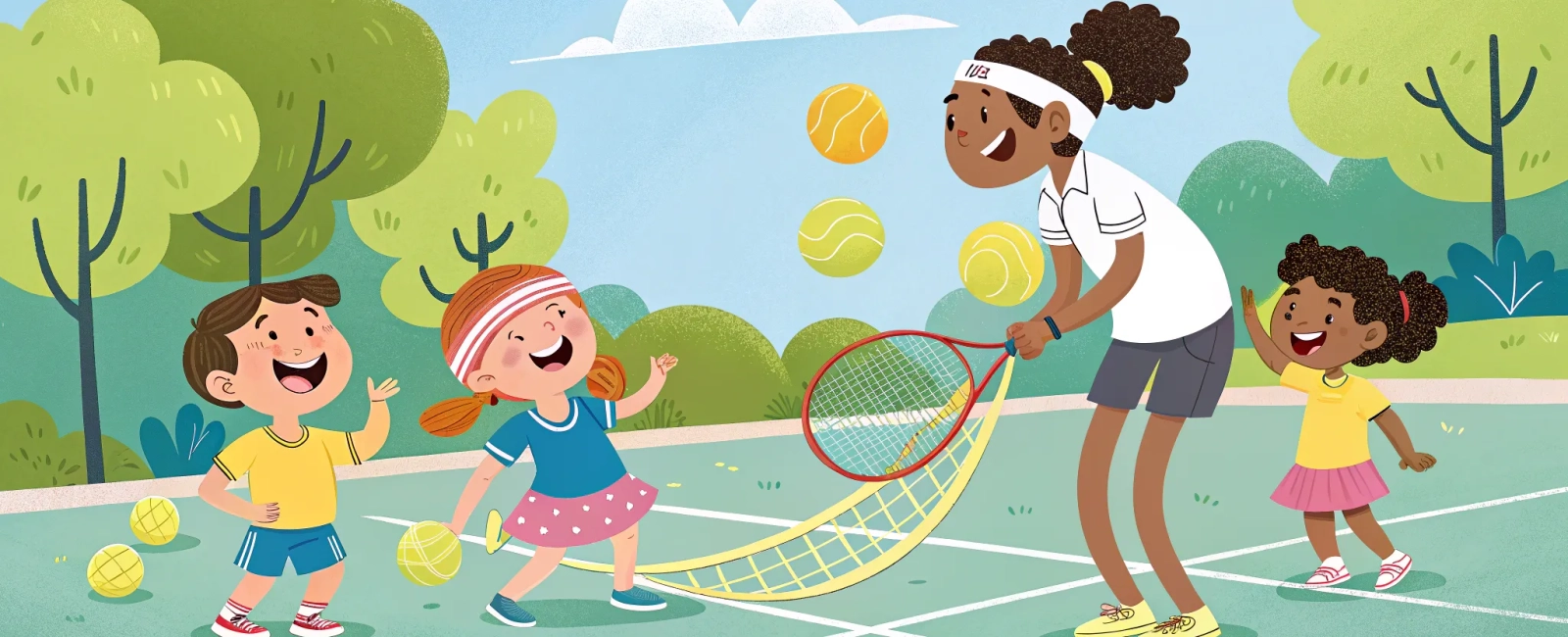Teaching Tennis Tots: A Parent's Guide to Success

Introduction
So, you’re passionate about tennis, spending hours perfecting your swing and strategizing your gameplay. But have you ever considered stepping off the baseline and onto the sidelines to coach? Sharing your love for the sport with younger kids can be a game-changer—not just for them, but for you as well. Coaching offers a fresh perspective on the game and helps you develop skills that stretch beyond the court.
Why Coaching Little Ones Is Worth Your Time
You might be wondering why, with an already packed schedule, you should invest time in coaching children. Here’s the thing: kids bring a level of enthusiasm and curiosity that’s downright infectious. When you teach them, you’re reminded of the pure joy of the game, free from pressures like scores or rankings. Plus, guiding others can reinforce your own skills and deepen your understanding of tennis.
Coaching young players also helps you develop essential life skills like leadership, patience, and communication. These are qualities that colleges and future employers appreciate, and they can benefit you in virtually every aspect of life.
Making Tennis Fun: The Key to Engaging Young Players
One of the most critical insights from experienced coaches is that children play sports primarily to have fun, make friends, and be active—not necessarily to win. Keeping this in mind can transform the way you approach coaching.
Engaging Drills That Kids Will Love
One Bounce – Two Bounce: Adapted from a USTA guide, this drill uses a playground ball to help kids develop tracking skills. The ball is larger and moves slower than a tennis ball, making it easier for them to follow and react.
Throwing Games Over a “Net”: Using a rope or string as a makeshift net, have the kids practice tossing balls over it. This simulates the motion of a forehand or backhand swing without the complexity of using a racket.
Racket Rallies: Challenge the kids to tap the ball up and down on their racket as many times as they can. This improves hand-eye coordination and helps them get comfortable with the equipment.
These activities are more than just games; they’re thoughtfully designed to develop essential tennis skills in a way that’s accessible and enjoyable for young children.
Balancing Structure and Flexibility
While it’s important to have a plan, being adaptable is crucial when working with kids. Attention spans can be short, and interests can shift rapidly. If you notice that a particular drill isn’t capturing their attention, don’t hesitate to favorite games up. Incorporate elements from their favorite games or let them suggest activities. This not only keeps them engaged but also makes them feel valued and heard.
Positive Reinforcement and Encouragement
Children thrive on positive feedback. Celebrate their efforts and progress, no matter how small. Instead of focusing on what didn’t go as planned, highlight what they did well and gently guide them toward improvements.
For example, if a child misses the ball, you might say, “You were so close! Your swing was fantastic, and with a little more practice, you’ll connect for sure.” This approach boosts their confidence and motivates them to keep trying.
Managing Your Time and Commitments
As a young athlete, balancing sports, academics, and a social life can be challenging. Adding coaching to the mix requires careful time management. Consider starting with a small commitment, like assisting with a weekly practice or running a short clinic during school breaks.
Remember that quality trumps quantity. Even a few hours a week can make a significant difference in the lives of young players. Plus, the skills you develop in organizing and prioritizing your time will serve you well in all areas of life.
Learning and Growth for You Too
Coaching isn’t just beneficial for the kids—it’s a learning experience for you as well. You’ll gain a deeper appreciation for the fundamentals of the game, as teaching requires you to break down complex skills into simple, understandable steps. This can enhance your own performance as you become more mindful of technique and strategy.
Moreover, interacting with children can improve your communication skills. You’ll learn to convey ideas clearly and adjust your approach based on your audience’s needs—a valuable skill in any future career.
Conclusion
Stepping into a coaching role opens up a world of opportunities for personal growth and community impact. By sharing your enthusiasm for tennis with young children, you’re fostering a love for the sport that can enrich their lives in countless ways. It’s a chance to give back, develop new skills, and perhaps even see the game you love in a whole new light.
So why not pick up that whistle, gather some eager kids, and start making a difference? Not only will you be helping them, but you’ll also embark on a rewarding journey that complements your own athletic pursuits.
